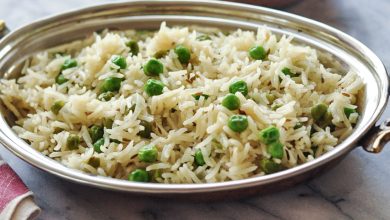Gavar Pumpkin Sabji Recipe
Discover the delightful flavors of Gavar Pumpkin Sabji, a traditional Indian dish that perfectly combines the earthy taste of cluster beans (Gawar Phali) and the sweet, creamy texture of pumpkin (Kaddu). This vegetarian side dish is not only vibrant in color but also rich in nutrients, making it a fantastic addition to any lunch spread, especially when paired with warm Phulkas and hearty Panchmel Dal.
Ingredients
| Ingredient | Quantity |
|---|---|
| Gawar Phali (Kothavarangai / Cluster Beans) | 1 cup (washed, strings removed, cut) |
| Kaddu (Parangikai / Pumpkin) | 1 cup (peeled and chopped) |
| Onion | 1 (chopped) |
| Garlic | 5 cloves (crushed) |
| Dry Red Chillies | 4 (chopped) or 1 tsp red chilli powder |
| Methi Seeds (Fenugreek Seeds) | 1 tsp |
| Asafoetida (Hing) | 1/2 tsp |
| Fennel Seeds (Saunf) | 1 tsp (toasted and crushed) |
| Coriander Powder (Dhania) | 1 tsp |
| Cumin Seeds (Jeera) | 1 tsp |
| Mustard Seeds | 1 tsp |
| Amchur (Dry Mango Powder) | 1/2 tsp |
| Roasted Peanuts (Moongphali) – optional | 2 tsp (powdered) |
| Turmeric Powder (Haldi) | 1/2 tsp |
| Sunflower Oil | As required |
| Salt | To taste |
| Fresh Coriander Leaves (Dhania) | For garnishing |
Nutritional Information (per serving)
| Nutrient | Amount |
|---|---|
| Calories | Approximately 150-200 kcal |
| Protein | 5-7 g |
| Total Fat | 7-10 g |
| Carbohydrates | 20-25 g |
| Dietary Fiber | 4-5 g |
| Sugars | 3-4 g |
Preparation Time
| Type | Time (minutes) |
|---|---|
| Preparation Time | 10 |
| Cooking Time | 20 |
| Total Time | 30 |
Servings
| Servings | 4 |
|---|
Instructions
-
Prepare the Fennel Seeds: Start by heating a small wok over medium heat. Add the fennel seeds and lightly toast them until they become aromatic. Once toasted, allow them to cool, then crush coarsely using a mortar and pestle or a rolling pin.
Related Articles -
Heat the Oil: In the same wok or a pressure pan, heat a generous amount of sunflower oil over medium heat. When the oil is hot, add the mustard seeds. As they begin to splutter, carefully add the cumin seeds.
-
Sauté the Aromatics: To the tempered spices, add the methi seeds, chopped dry red chillies (or red chilli powder), asafoetida (hing), and turmeric powder. Sauté for a few seconds until fragrant. Next, incorporate the crushed garlic and chopped onion, stirring continuously for about a minute until the onion becomes translucent.
-
Add Vegetables: Now, introduce the chopped cluster beans and pumpkin to the pan. Stir well to ensure the vegetables are coated with the spices.
-
Spice It Up: Sprinkle in the crushed fennel, coriander powder, and amchur powder (or tamarind pulp) for an added tang. Mix thoroughly to combine all ingredients.
-
Cooking the Sabji: Season the mixture with salt to taste and pour in about 1/2 cup of water (or more depending on desired consistency). Secure the lid of the pressure pan and cook for 1 whistle and then on low heat for 5 minutes. Alternatively, you can cook the mixture covered in a regular wok until the vegetables are soft.
-
Finishing Touches: After cooking, check the texture of the beans and pumpkin; they should be tender but not mushy. If you prefer a drier sabji, adjust the water content accordingly. If you are using roasted peanut powder, sprinkle it in now and stir well, allowing it to cook for an additional 1-2 minutes.
-
Garnish and Serve: Once done, remove the sabji from heat and garnish generously with fresh coriander leaves. Serve hot as a side dish alongside Panchmel Dal and steaming Phulkas for a wholesome and satisfying meal.
Enjoy Your Meal!
With its vibrant colors and delicious taste, Gavar Pumpkin Sabji is sure to become a favorite in your household. This recipe not only highlights the natural sweetness of pumpkin and the unique flavor of cluster beans but also showcases the rich culinary traditions of Indian cuisine.




